Affiliate marketing is a powerful way to earn passive income online. But diving into it without proper preparation can lead to frustration and missed opportunities.
In this guide, you’ll find a detailed affiliate marketing checklist that will help you launch and manage your affiliate marketing efforts effectively, enabling you to maximize your earnings while minimizing potential pitfalls.
Let’s get started on your journey toward becoming a successful affiliate marketer!
Disclaimer: If you buy any products through links on this site, I may earn a commission. But it doesn't make any difference to your cost, and it helps me keep this blog running. So you could always read my articles for free.
Affiliate marketing checklist
To set yourself up for success, you need a comprehensive checklist on affiliate marketing that ensures you cover every essential aspect of the process. So here it goes.
Pick the right niche
An affiliate marketing niche is a specific market you focus on to promote products and earn commissions. Instead of targeting everything, you zero in on a particular audience, such as fitness, tech gadgets, or personal finance.
For instance, a niche like “home fitness equipment” appeals to people looking to work out at home, where products like resistance bands or exercise bikes fit naturally.
To find a profitable niche, you can use keyword research using tools like Ahrefs, Google Trends, or Semrush. Look for niches with high search volume but moderate competition.
For example, the health niche generates billions annually, but drilling down into a micro-niche, like “vegan protein powders,” offers better chances to rank content.
Next, evaluate the niche’s earning potential by checking affiliate networks like ShareASale or ClickBank for available products. You want to see if there are enough merchants in the niche offering competitive commissions.

Also, consider the audience’s purchasing behavior—niches like “pet accessories” or “home office equipment” attract repeat buyers. Focus on balancing your passion with profitability to ensure long-term commitment.
To learn more, check out this guide on picking the right affiliate marketing niche.
Get a domain name
Choosing the right domain name is an essential step in an affiliate marketing checklist because it sets the tone for your brand and impacts SEO.
Your domain should be short, memorable, and relevant to your niche. Aim for 8-14 characters to make it easy to type and recall.
You can use tools like Namecheap or GoDaddy’s domain search to see if your ideas are available.
If the exact match is taken, try adding modifiers (e.g., “reviews,” “guide,” or “hub”) to keep it aligned with your niche. For instance, if HealthyLiving.com is unavailable, try HealthyLivingGuide.com.
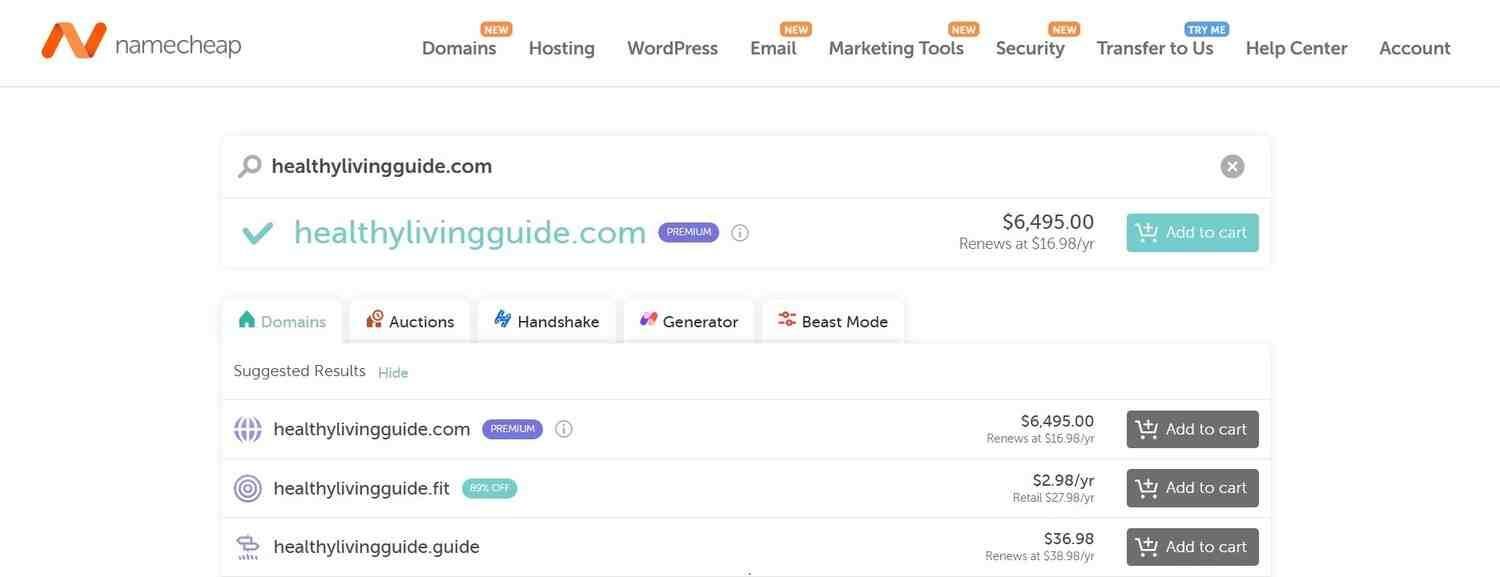
Stick with a .com domain, as it’s more trusted by users and search engines. And avoid numbers or hyphens, as they can confuse visitors.
For more information, take a look at this guide on choosing a domain name.
Build an affiliate website
Building an affiliate website starts with setting up a solid technical foundation. That’s why in this affiliate marketing checklist, I recommend WordPress, the go-to CMS, due to its ease and flexibility. And because it’s free.
You’ll need to pay for hosting, though. After setting up hosting with a service like Hostinger, you can install WordPress through your host’s control panel.
Next, select a clean, fast-loading theme such as Astra or GeneratePress. These themes are lightweight and customizable, which improves both user experience and SEO.
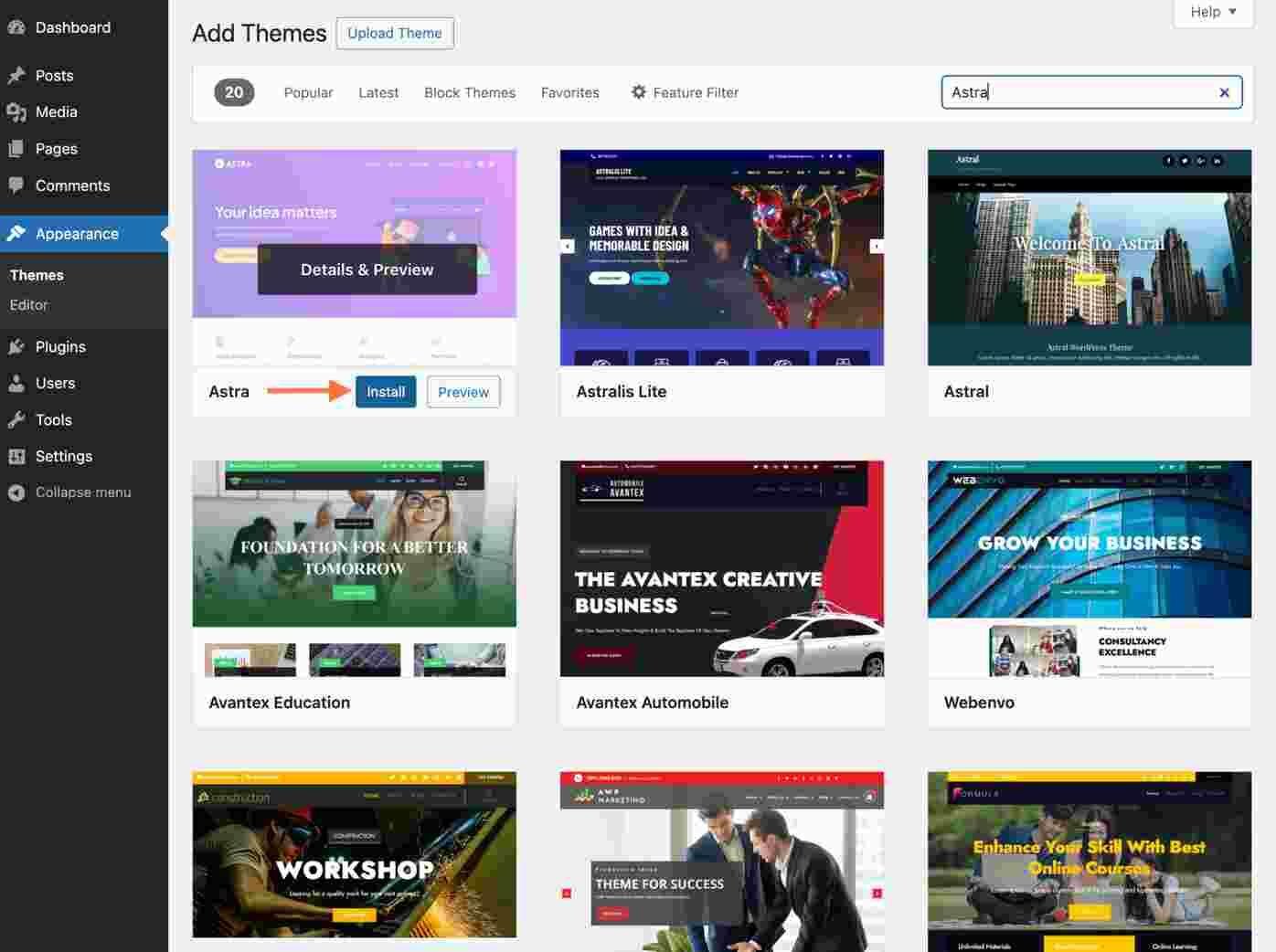
You also want to install essential plugins like Yoast SEO for search optimization, Site Kit by Google for analytics, and Pretty Links to manage affiliate links.
Your website structure should be easy to navigate. Create clear categories related to your niche, so visitors can find products effortlessly. Build key pages such as a privacy policy and disclaimer page to comply with affiliate platform rules.
To learn further, read this guide on building an affiliate website.
Ensure mobile-friendly design
If your site doesn’t perform well on smartphones, you risk losing visitors and potential commissions. So making sure your website looks good on screens of all devices is a key part of an affiliate marketing checklist.
That’s another reason I recommend a responsive theme like Astra or GeneratePress, which automatically adjusts to different screen sizes.
Once you have set up your website, use tools like Google’s Lighthouse to ensure your site functions well on mobile screens.
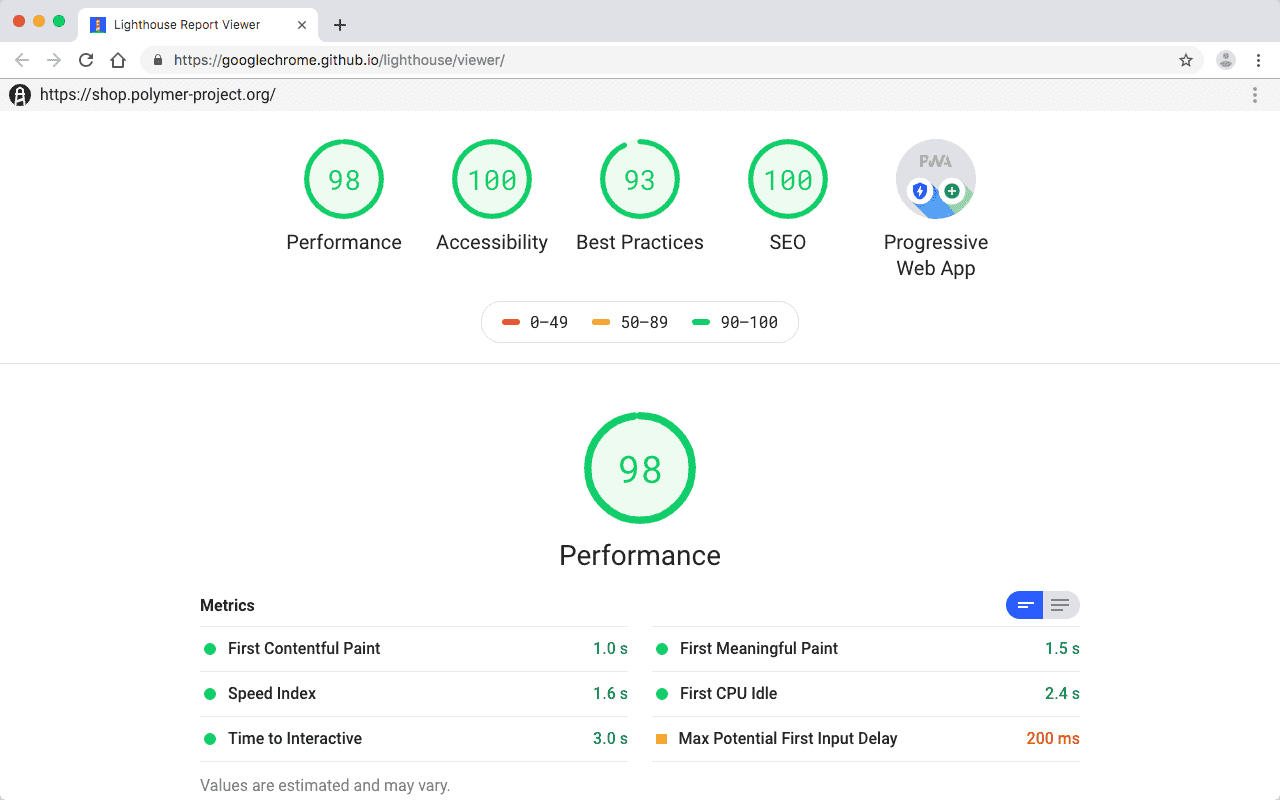
Make navigation easy—use large, tappable buttons and limit menu items to 5-7 options. Avoid pop-ups that interfere with mobile browsing, as these frustrate users and can hurt your Google rankings.
Ensure affiliate links are easy to click on mobile, using tools like Pretty Links to shorten and track them.
For more details, refer to this guide on mobile-friendly website design.
Select products to promote
Choosing products that align with your niche and offer good earning potential is another vital element of any checklist on affiliate marketing.
Start by exploring affiliate networks like Amazon Associates, ShareASale, or ClickBank. Look for products with at least a 10% commission rate or $30+ average sale value to ensure meaningful income.
Prioritize products you trust or have personal experience with—authentic recommendations build credibility.
For example, if you run a tech blog, promoting popular gadgets like wireless earbuds or laptops makes sense. You can use Semrush or Google Trends to check demand and seasonal trends for products you’re considering.
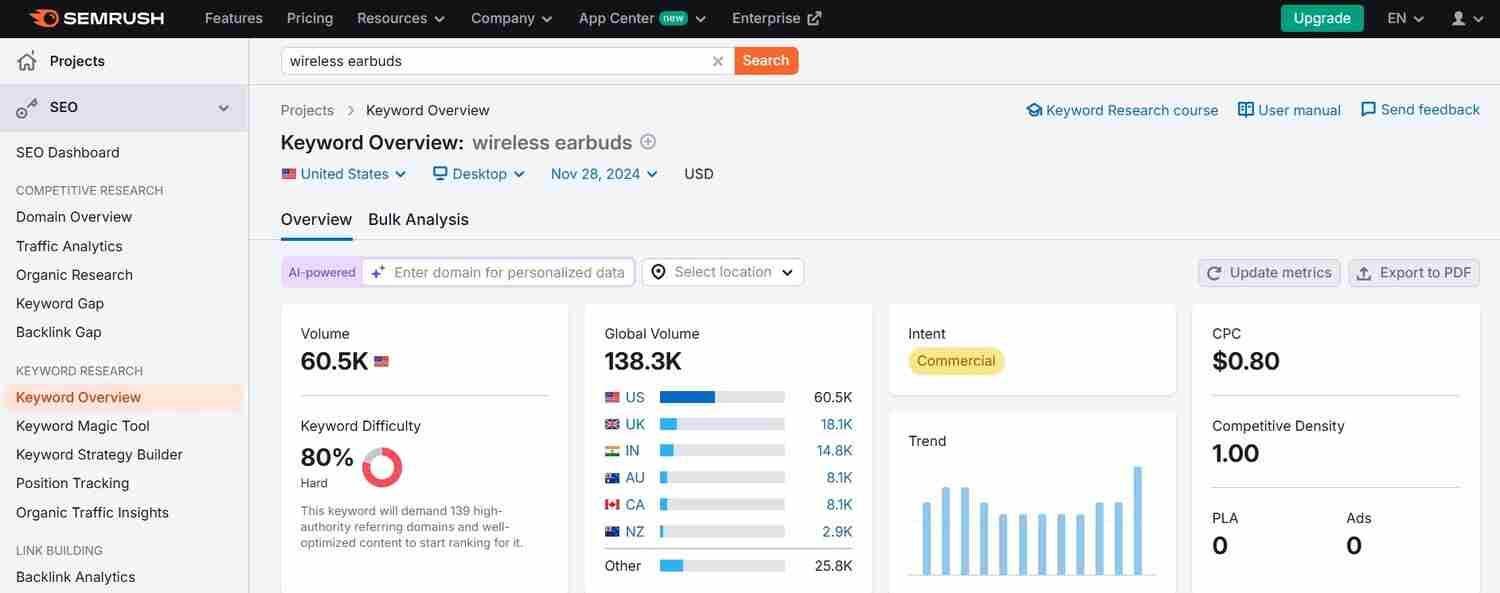
Evaluate product reviews and return rates to avoid promoting items with poor customer feedback. High-return products can hurt your commissions. Finally, track your performance using affiliate dashboards and Google Analytics.
If certain products underperform, switch them out for better options. Regular testing helps you find the sweet spot between quality and profitability.
Create high-quality content
Content creation is the backbone of affiliate marketing—it drives traffic and helps you promote products effectively. Your goal is to create valuable, engaging content that encourages readers to click your affiliate links.
Start by focusing on SEO-optimized blog posts such as product reviews, comparisons, or “Top 10” lists. For example, a post like “Best wireless earbuds under $100” can attract targeted readers ready to buy.
Use tools like Semrush or Ahrefs to find keywords with low competition and a minimum of 1,000 monthly searches. Structure your content with clear headings, bullet points, and calls to action to keep readers engaged.
Incorporate product images and videos to build trust—tools like Canva can help you design visuals, while Lumen5 lets you turn posts into short videos. Keep your tone conversational and offer honest opinions.

For example, “I tested three models, but the XYZ earbuds stood out for battery life.” Regularly update posts to stay relevant and maintain rankings.
If you’re interested, you can learn more by reading our guide on content creation.
Invest in SEO
SEO (Search Engine Optimization) is non-optional for affiliate marketing. And that’s why it’s a part of this checklist on affiliate marketing. It helps your content rank higher on Google, driving organic traffic to your site.
The first step is to research keywords relevant to your niche. For this, you can use tools like Google Keyword Planner or Semrush.
You want to focus on long-tail keywords—phrases with 3+ words—since they have lower competition. For example, “best yoga mats for beginners” is easier to rank than just “yoga mats.”
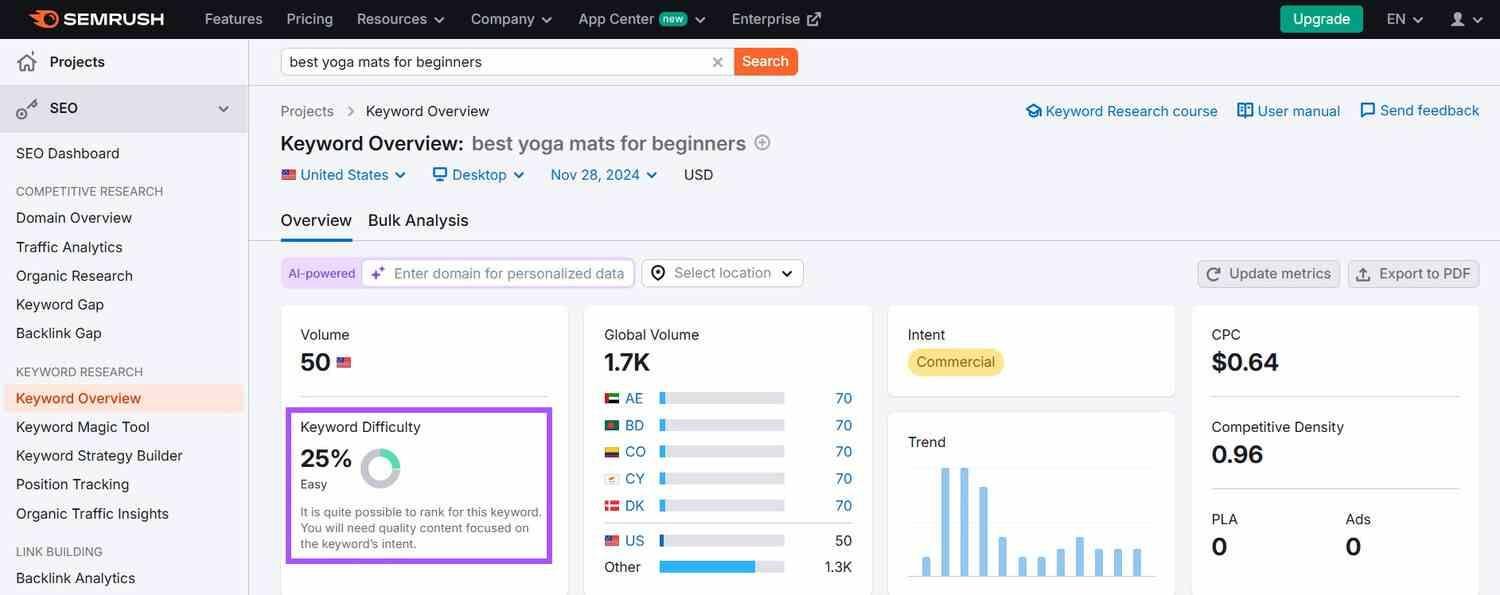
It’s impossible to cover all about SEO in this guide. But here are some general best practices to consider.
Use Yoast SEO or Rank Math plugins to monitor on-page SEO factors like meta descriptions and headings.
Optimize your posts by including the primary keyword in the title, URL, and first 100 words.
Build internal links between your posts to improve navigation and search engine crawling.
Ensure fast loading
Loading speed is critical for your affiliate website, as it directly affects user experience and conversion rates.
To enhance your site’s performance, start by testing its speed using tools like GTmetrix or Google PageSpeed Insights.
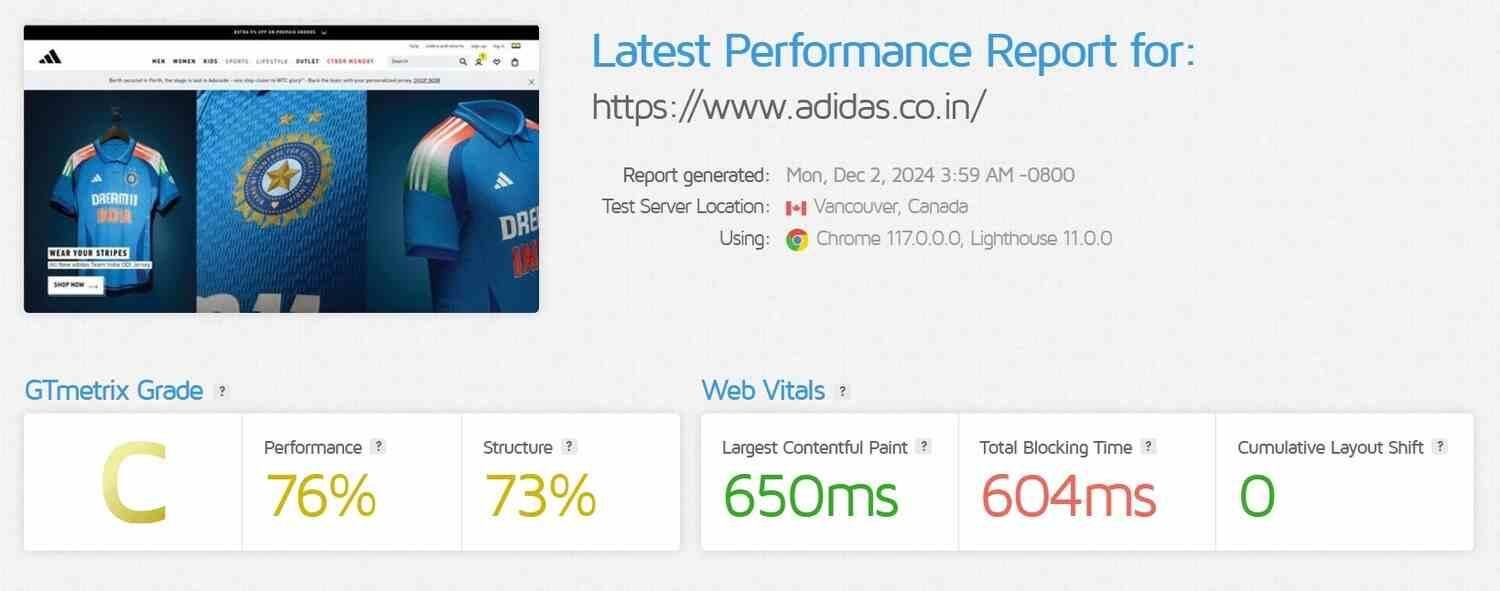
Optimize images by compressing them with tools like TinyPNG or Smush. Use appropriate formats such as JPEG for photos and PNG for graphics.
Implement caching solutions like WP Rocket or W3 Total Cache to store static versions of your pages, reducing load times for repeat visitors.
Limit the use of heavy plugins and consider using a content delivery network (CDN) like Cloudflare to speed up delivery to global users.
Regularly audit your website’s performance, addressing any issues that arise, and keep your loading speed in check to ensure a smooth user experience and higher conversions.
Build a social media presence
Social media marketing is important for affiliates and for this reason, it earns its place in this checklist on affiliate marketing. It helps you reach a wider audience and drive traffic to your site.
Start by choosing the right platform based on your niche; for example, Instagram works well for fashion and lifestyle products, while LinkedIn is ideal for B2B services.

Then, for each platform, create engaging content on a regular basis, such as product reviews, unboxing videos, or infographics to showcase your affiliate products.
Use tools like Canva for designing eye-catching graphics and Hootsuite or Buffer to schedule posts consistently. Aim for at least 3-5 posts per week to maintain engagement.
Make it a habit to engage your audience through direct messages and comments to build trust.
Finally, analyze your performance using tools like Facebook Insights or Instagram Analytics to refine your strategy and improve results.
Set up Google Search Console
Setting up Google Search Console (GSC) is essential for monitoring your website’s performance in search results. It provides valuable insights into how your site appears on Google and helps identify issues that could affect your SEO. Because of these reasons, this step is important to have in an affiliate marketing checklist.
To get started, log into Google Search Console. Click “Start Now” and select your property type—either a domain or a URL prefix. For beginners, the URL prefix is often easier.
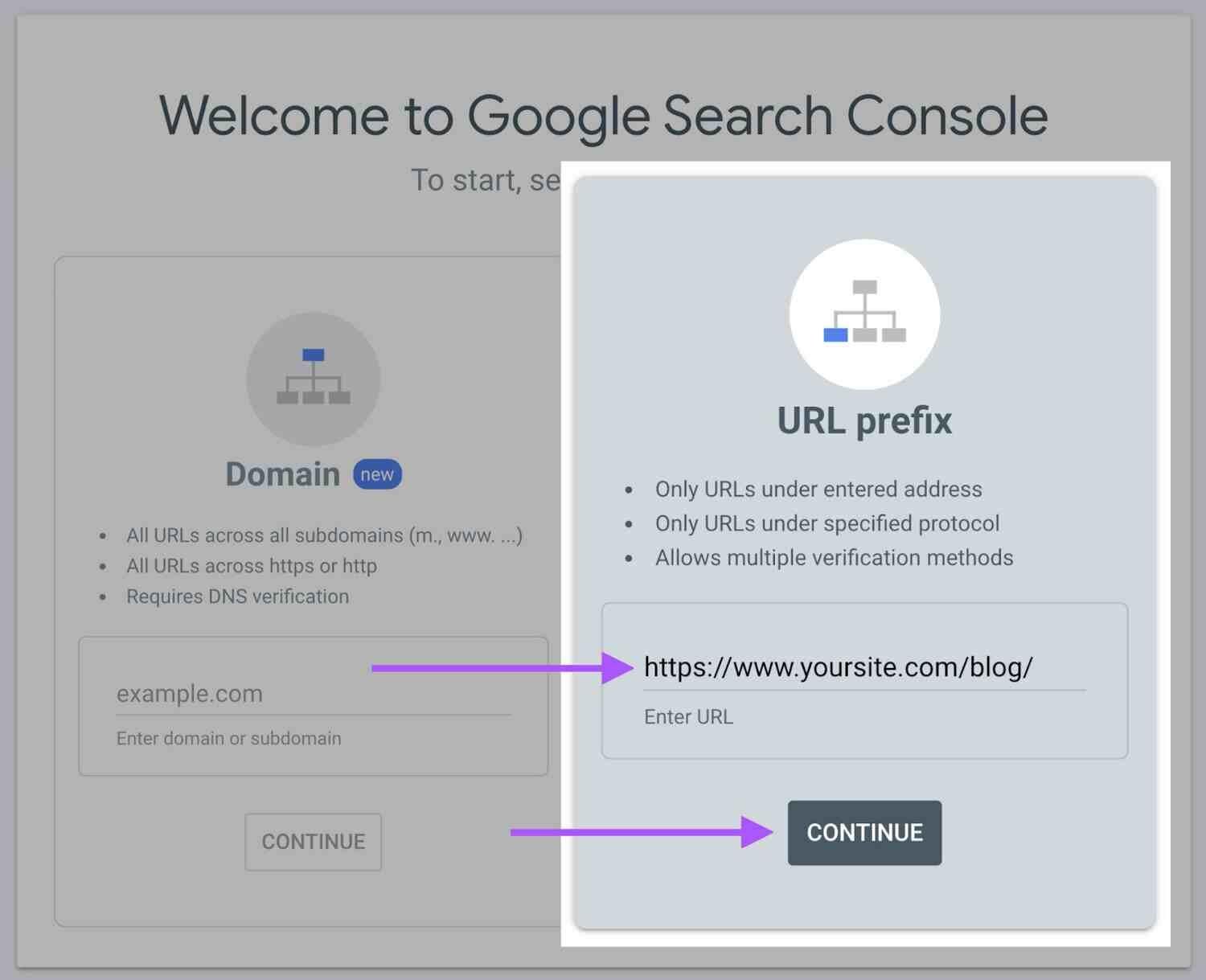
Next, verify ownership of your site by adding an HTML tag to your website’s header or using Google Analytics.
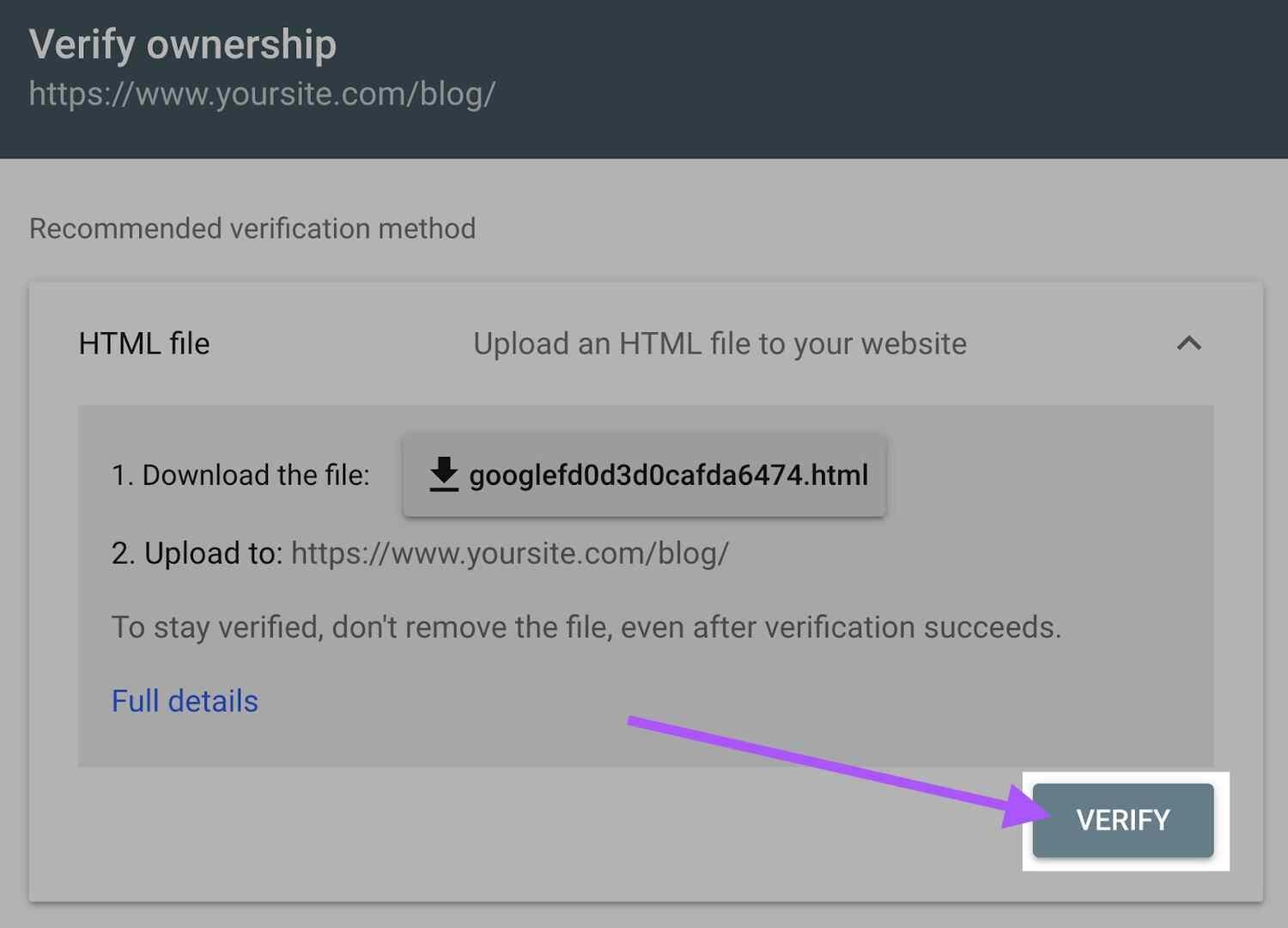
After verification, you’ll access the dashboard. Regularly check the Performance report to see your search traffic and keywords. Aim to fix any issues listed under Coverage—like errors or warnings—as these can impact your site’s visibility.
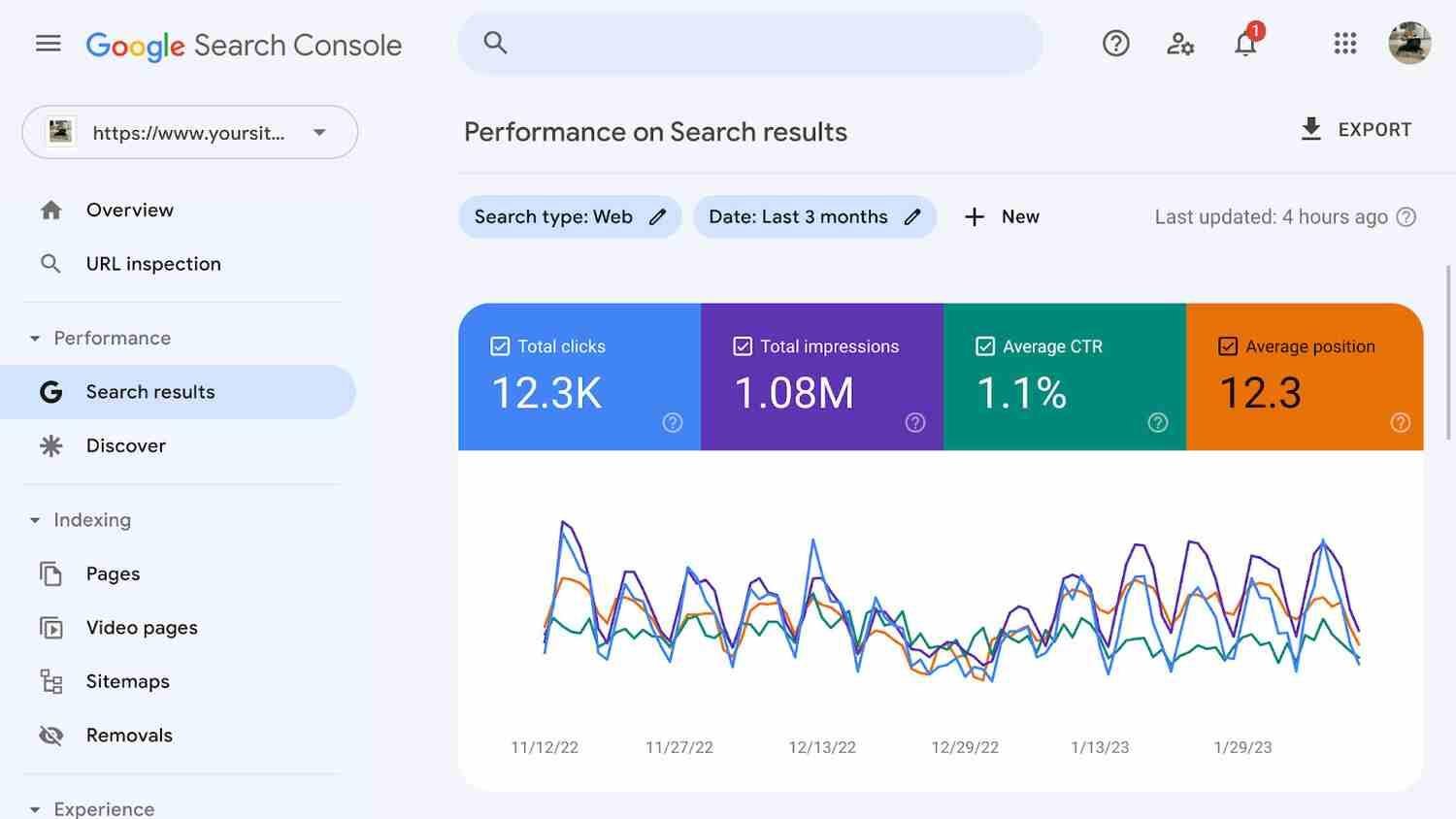
Utilize the Sitemaps feature to submit your sitemap and improve crawling efficiency, enhancing your site’s overall SEO performance.
Apply for affiliate programs
You’re at the part of this affiliate marketing checklist where it’s time to identify programs that align with your content and audience. For example, if you run a tech blog, consider programs like Amazon Associates or Best Buy Affiliate Program, which cater to technology enthusiasts.
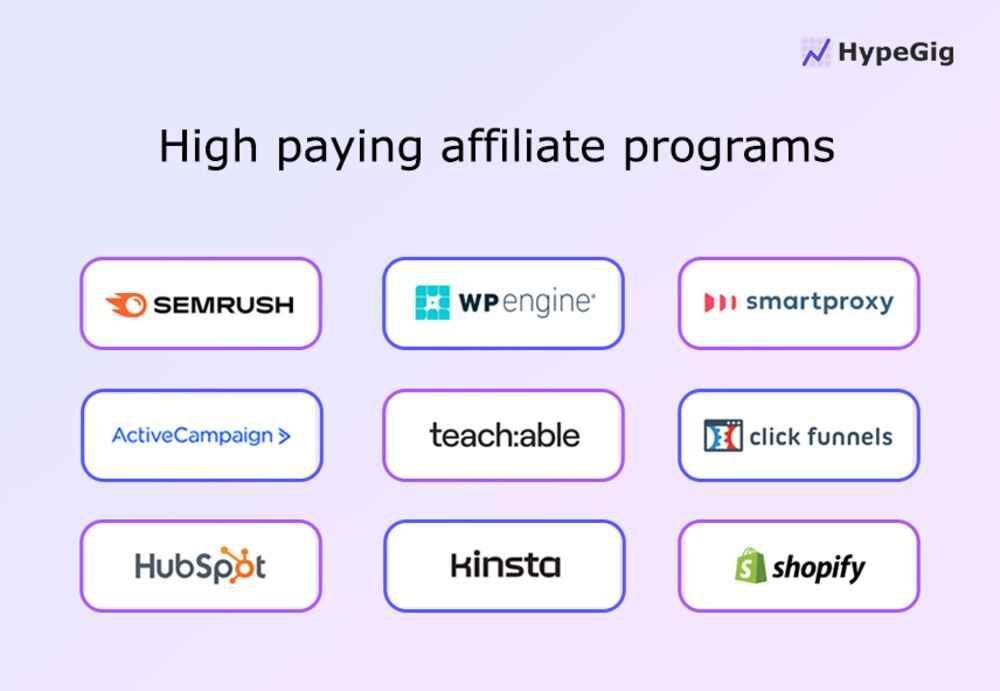
Once you identify suitable programs, visit their websites and locate the “Affiliates” or “Join Us” section.
Fill out the application form, providing details like your website URL, traffic statistics, and audience demographics. Programs often require at least 100 monthly visitors to qualify, but this can vary.
After submitting your application, wait for approval, which typically takes a few days.
Show affiliate disclaimer
An affiliate disclosure is a legal requirement that informs your audience when you promote affiliate products. It builds trust and transparency, letting readers know you may earn a commission from their purchases. So it’s a necessary step in any checklist on affiliate marketing because of its legal nature.
In the U.S., the Federal Trade Commission (FTC) mandates that disclosures be clear and conspicuous.
Start by placing your disclosure at the beginning of your content—ideally within the first few sentences. For example, you could say:
“This content contains affiliate links, and I may earn a commission if you make a purchase. But it doesn’t cost you any extra amount.”

Use a dedicated page for comprehensive disclosures that explain your affiliate relationships and how they support your content. Tools like WP Disclosure can help you create and manage your disclosures easily.
Always update your disclosures to reflect any changes in your affiliate partnerships. Regularly review your compliance with FTC guidelines to maintain credibility and avoid potential legal issues.
For a deeper understanding, feel free to read this guide on affiliate disclosure.
Monetize content with affiliate links
The last thing I’ll talk about in this affiliate marketing checklist is inserting affiliate links in your content. Affiliate links are unique URLs that track referrals from your website to a merchant’s site, allowing you and the merchant company to track sales generated through your efforts.
When creating content, integrate these links naturally—such as in product reviews or comparison posts. For example, if you review a camera, include an affiliate link to the exact model on Amazon.
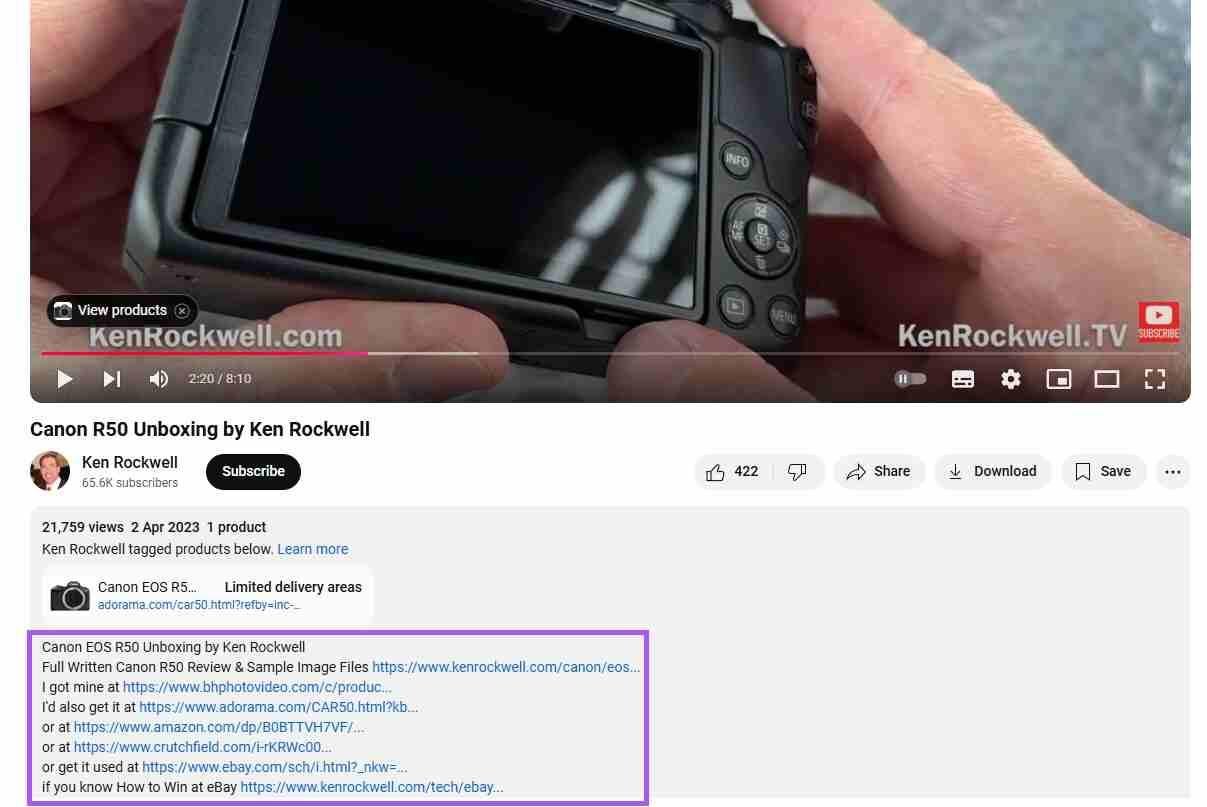
Use tools like Pretty Links to shorten and manage your affiliate links, making them cleaner and easier to share. Also, make sure you set affiliate links to nofollow.
Final thoughts
Each step you take moves you closer to establishing a successful affiliate marketing business that generates a sustainable income.
Remember, consistency and continual learning are key to your growth. Now that you have this checklist at your fingertips, it’s time to take action and watch your affiliate marketing endeavors flourish!
Did I miss anything in this affiliate marketing checklist? Did you try these tips? Do you have any questions or comments? Share your thoughts below in the comments section.




